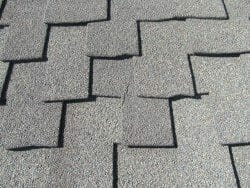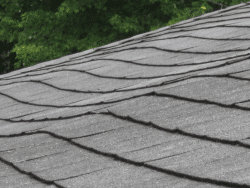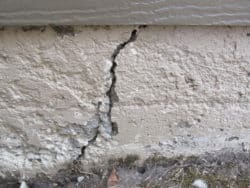Two or More Roof Coverings: 2 May Be OK Sometimes, However, Look For These Problems
Home » Exterior » Roof » Miscellaneous Roof Issue »

Two or more roof coverings can result in too much weight, sagging and rafter damage. A number of things should be looked at to determine if there is a problem or not.
When the original roof of a home wears out, it has been a common practice to lay another roof on top of the original roof, rather than remove the original roof, before putting the new roof on. Most building jurisdictions would allow one roof to be placed on top of another, depending on the type of roofing material, weight, rafter and truss size.
The most common roof to be placed on top of an existing roof is to lay a composition roof on top of a composition roof. However, they generally would not allow a third roof to be added, and there are certain restrictions about what type of roofing materials could be laid over other type of materials.
Three roofs – not allowed
Properly done re-roofing has provided a leak free house for many homeowners. Manufactures generally prefer that you do not lay one roof over another, however, building jurisdictions may allow up to two covering (depending on the type of roofing material), but not three. Discussions with a roofing contractor and the local building department may provide additional information on this subject.
Weight of additional roofs
The framing members that support the weight of the roof are only designed to carry so much weight. If too much weight is added, then the roof may sag or the rafters may crack or fail. Examples would be where the owner added a second or third roof over the original, or a concrete tile roof was added on top of a wood shake or composition shingle roof.
Permits
In some building jurisdictions you can re-roof a home without obtaining a permit, however, in others a permit is required. Checking the building departments web site or a call to them will tell you if a permit is required. Generally the permits are easy to obtain but if your re-roofing with a roofing material that is much heavier than the existing material, you may be required to document that the existing rafters or trusses are strong enough to carry the added weight. This is something that professional roofers deal with all of the time and they can help answer any questions that you may have, including ones on cost. (Read more about permits for roof repairs and reroofing )
Consult
Consulting a qualified roofer regarding one roof laid over another should provide good information on this matter.








